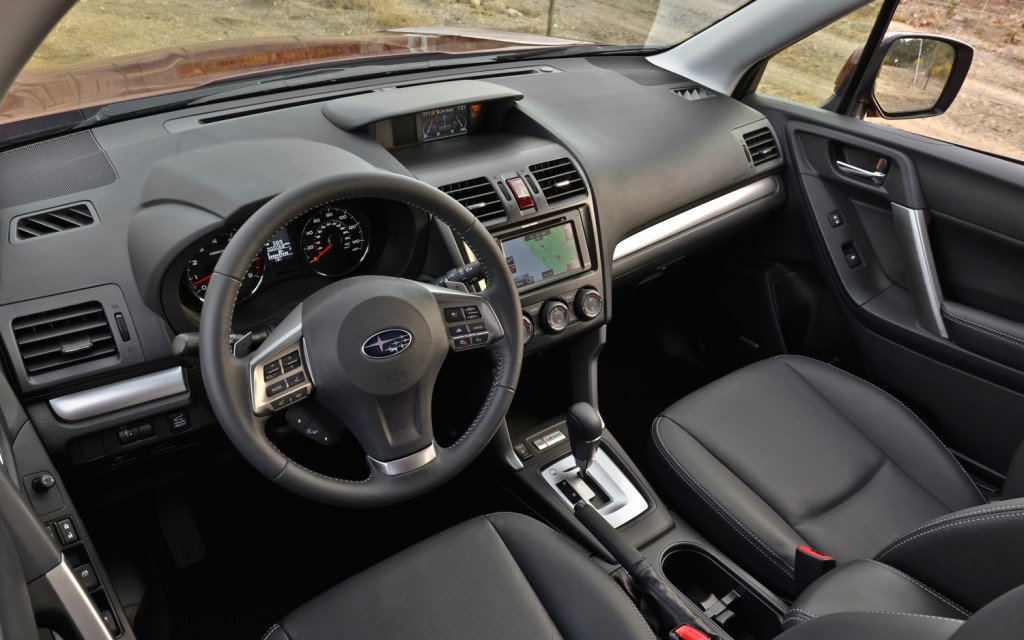The Forester has not been crash-tested by the federal government or the Insurance Institute for Highway Safety at this time.
It does feature seven airbags, including front seat-mounted side-impact airbags and a driver’s knee airbag.
Subaru has also moved the top tether mounts for child-safety seats from the cabin’s roof to the rear seatbacks for easier access and improved rear visibility.
The base 2.5i Forester starts at $22,820, including an $825 destination charge. That is with a six-speed manual transmission. The CVT is an additional $1,000.
At that $23,820 price, the Forester comes well-equipped with Bluetooth for phone and streaming audio, a four-speaker stereo system, USB input, cruise control and a tilt/telescoping steering wheel with controls for phone and audio.
A front-wheel-drive base Honda CR-V LX with an automatic transmission starts at $23,625 while a front-wheel-drive RAV4 LE base starts at $24,145, both including destination.
The next step up is the Forester 2.5i Premium at $24,320 for the manual and $25,820 for the CVT. It adds a power driver’s seat, 17-inch alloy wheels, a six-speaker stereo system with HD Radio, body-colored mirrors, privacy glass, backup camera and roof rails.
The Premium will be the bulk of Foresters sold, but shoppers should be aware that the manual-transmission version actually comes with the All-Weather Package, including heated seats, but the package is an option on the CVT Premium. The CVT version comes with the panoramic moonroof and adjustable center armrest standard while the manual does not.
The 2.5i also comes in Limited and Touring trims priced at $28,820 and $30,820, respectively, and are only available with the CVT.
The XT comes in Premium and Touring trims with the CVT only at $28,820 and $33,820, respectively.
I’m no more impressed with the optional navigation system in the Forester than I have been in our long-term Subaru BRZ. It has the looks of an aftermarket system and is hard to use while driving.



